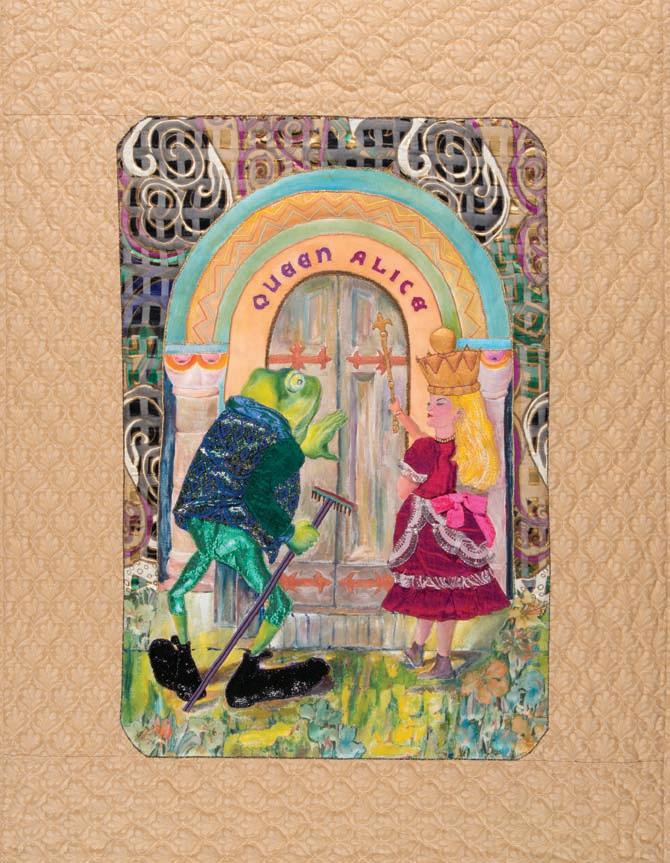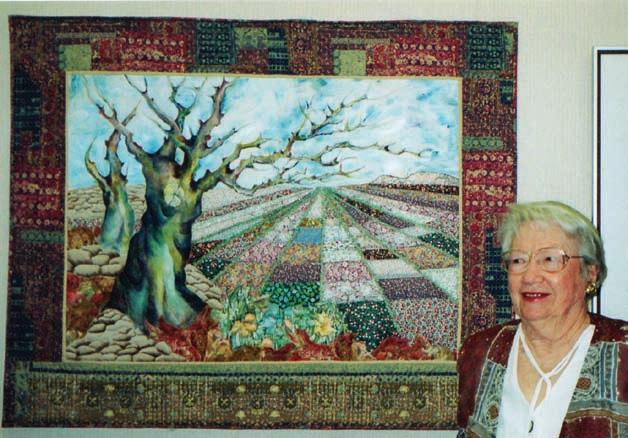
3 minute read
Alice in Wonderland Series
their colourful attire and humorous stout bodies. ‘The Queen’s Gardeners’ pictures three comical cards of different ages and opinions. ‘Alice and the Duchess’ portrays a domineering powerful woman wearing rather odd clothes who contrasts the gentle elegance of Alice.
Inspiration in Colour and Stitch
Advertisement
A Series of pieces based on Lewis Carroll’s Alice’s Adventures in Wonderland
Author: Frank Hyam (1997)
As a child, my wife Joyce was given a copy of Alice’s Adventures in Wonderland, containing black-and-white illustrations by John Tenniel. These have remained in her sub-conscious for over six decades, and inspired the interpretations that her art training enabled her to create.
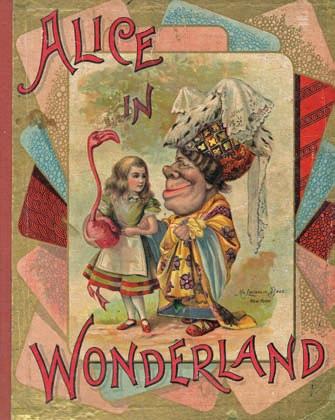
The ‘Alice’ Series
Author: Joyce Hyam (1997)
Inspired by Lewis Carroll’s Alice’s Adventures in Wonderland, I adapted several of the images from the original illustrations by John Tenniel, using artistic licence to create the nine artworks in the series. I painted on canvas using a textile medium, and sculptured the scenes with selected fabrics including gold cord; netting, and lace. To further develop the artworks, I used invisible stitching (eg. to stitch the [playing cards around the perimeter); metallic threads; appliqué; free machine stitchery, and quilting.
The ‘Looking Glass Garden’ extends from a massive tree in the left foreground through a pattern of flower-beds to a distant mountain on the horizon at right. ‘Tweedledee and Tweedledum’ capture the viewer’s attention with
That Lewis Carroll’s inventions are famous is, in no small way, due to Tenniel’s sensitive and comic perception of a world peopled by anthropomorphic as well as quasi-human beings. They are engaged in interactions as enchanted as they are disturbing. Who would not be distressed about the possibility of drowning in her or his tears? Which child is unfazed by having to face predicaments of tininess, illogicality, and unfamiliar beings and situations?
Joyce had great joy in ‘fabricating’ those fabrications, in rendering them as material substance. Painting and stitching together – literally as well as metaphorically – what comes from different universes was a great challenge.
Because these pieces rest on Carroll/Tenniel’s inspiration, small variations lie within the artist’s province. While three gardeners try to re-colour roses in the story to deceive the queen, Joyce uses other blooms, which give a fresh view of their attempted deception. This secondary deceptive move is intended to underlie the gardener’s would-be guile.
Cartooning is, of course, at the heart of both Carroll’s and Tenniel’s artifice. Yet an artist seeks to work at a level beyond that of a cartoonist. Thus all characters receive their facial and body language, including their costumes and environments, from a world in which the principals of art are paramount.
Our everyday language has abundant examples of ‘colour’ used in a non-visual sense. Colours are called ‘loud’ with no distinction made between auditory and visual perception. There are warm colours, cool colours and those that ‘shout’. The emotional dimensions of colour subtly affect viewers’ responses that are interactive and affect each other. Resonances are also set up by characters’ faces, costumes, backgrounds, stories and settings.
In the piece ‘Alice and the Duchess,’ the Duchess’s domineering character comes through in her features, her odd attire and her sheer size, which contrast so strongly with the far more demure personality that Alice presents. The appeal of ‘The Queen’s Gardeners’ stems from the age-range of the characters, plus their differences of opinion. In ‘Tweedledum and Tweedledee,’ the twins, as they seems to be, are the highlight of the work – Alice’s presence is of subsidiary significance.
128cm x 125cm
Textile: (painting on canvas; ‘sculptured fabric’ with invisible thread; machine stitchery; machine quilted)
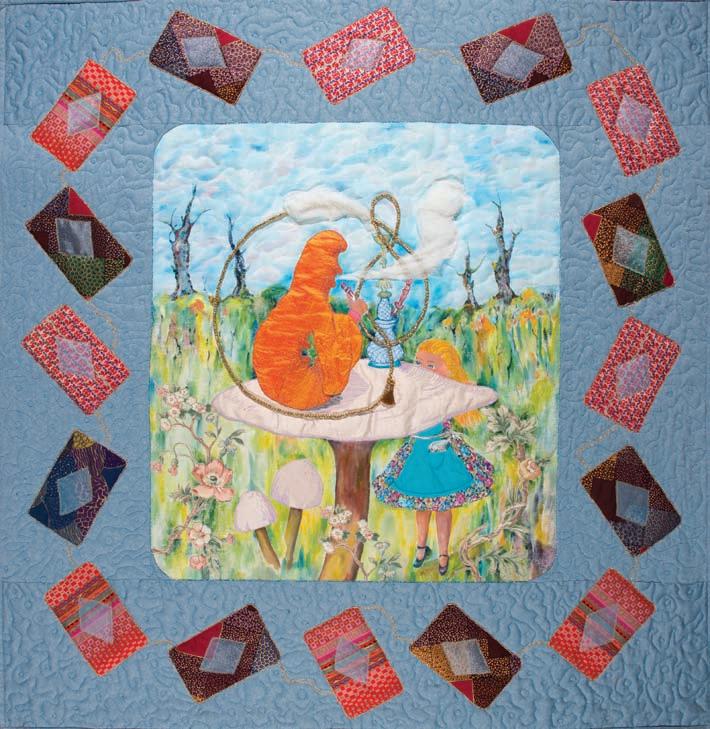
The Cheshire Cat 1996 -1997
99cm x 78cm
Textile: (painting on canvas; ‘sculptured fabric’ with invisible thread; machine stitchery; machine quilted)
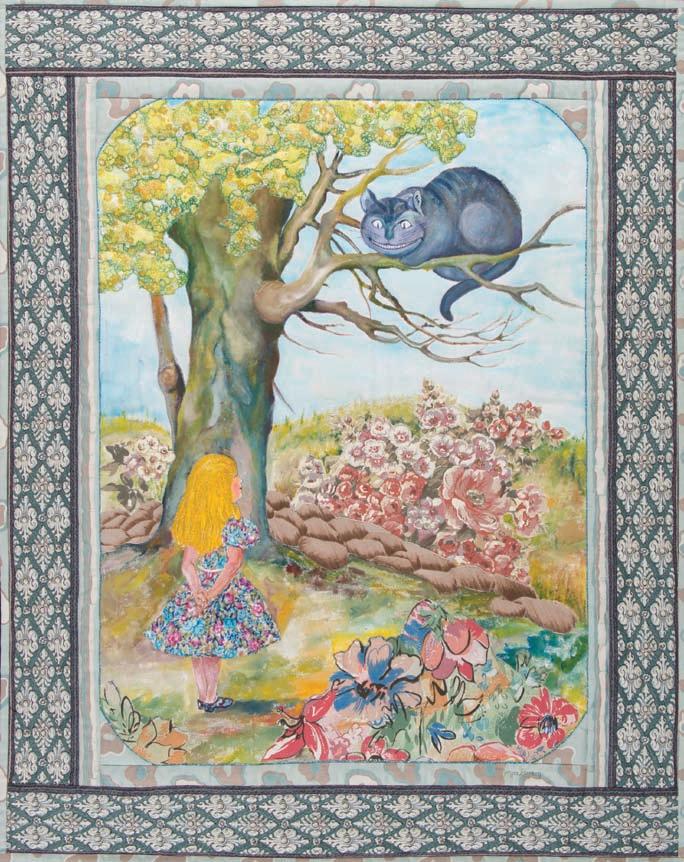
82cm x 92cm
Textile: (painting on canvas; ‘sculptured fabric’ with invisible thread; machine stitchery; machine quilted)
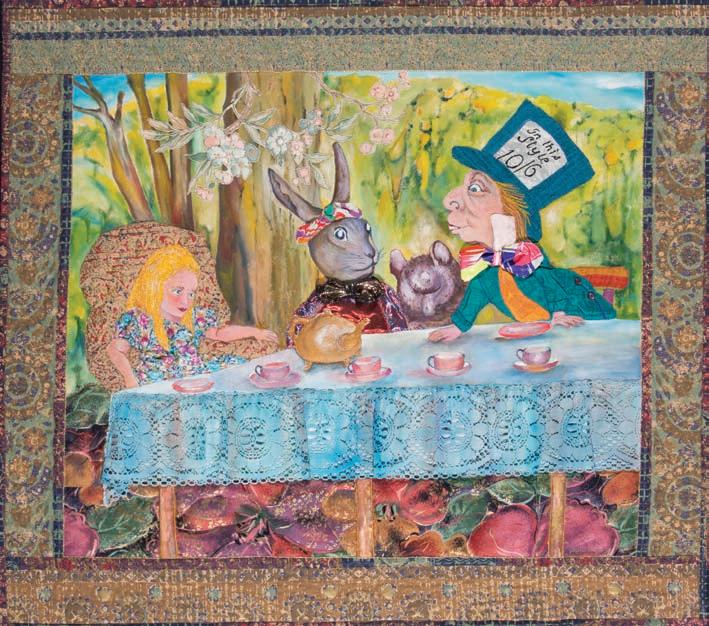
The Queen’s Gardeners
1996 -1997
109cm x 92cm
Textile: (painting on canvas; ‘sculptured fabric’ with invisible thread; machine stitchery; machine quilted)
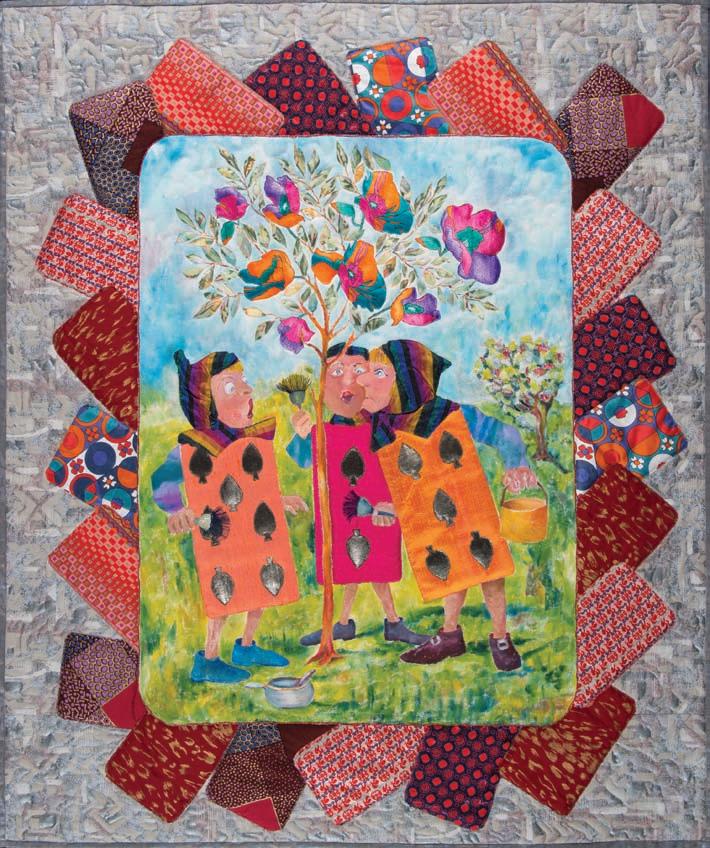
Off with her Head
1996 -1997
107cm x 97cm
Textile: (painting on canvas; ‘sculptured fabric’ with invisible thread; machine stitchery; machine quilted)
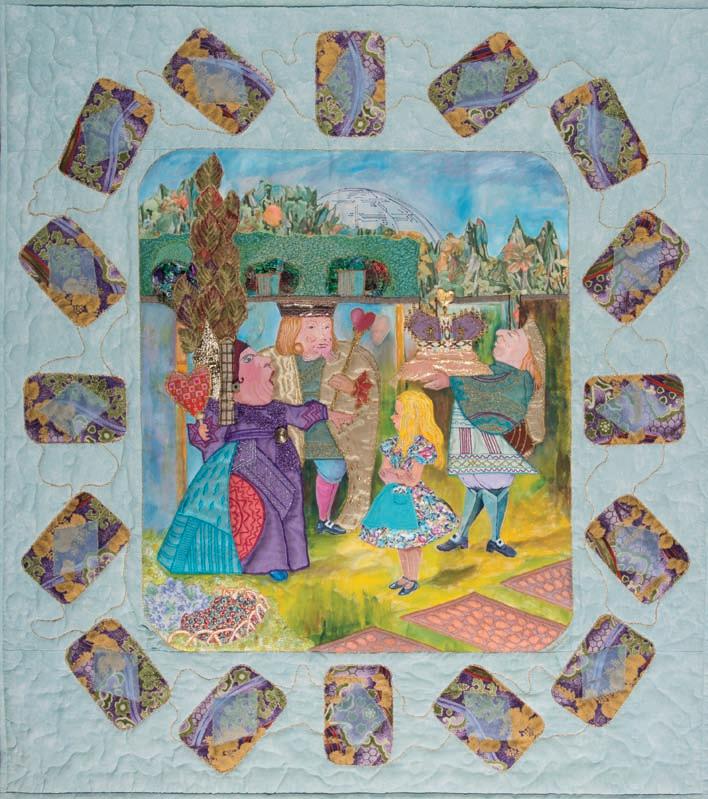
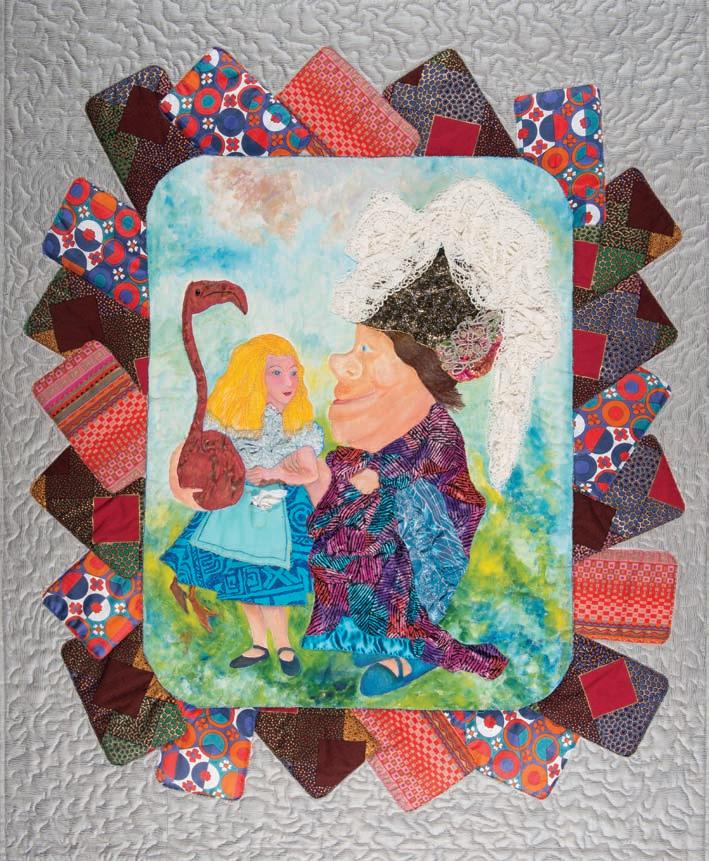
The Looking Glass Garden
1996 -1997
153cm x 97cm
Textile: (painting on canvas; ‘sculptured fabric’ with invisible thread; machine stitchery; machine quilted)
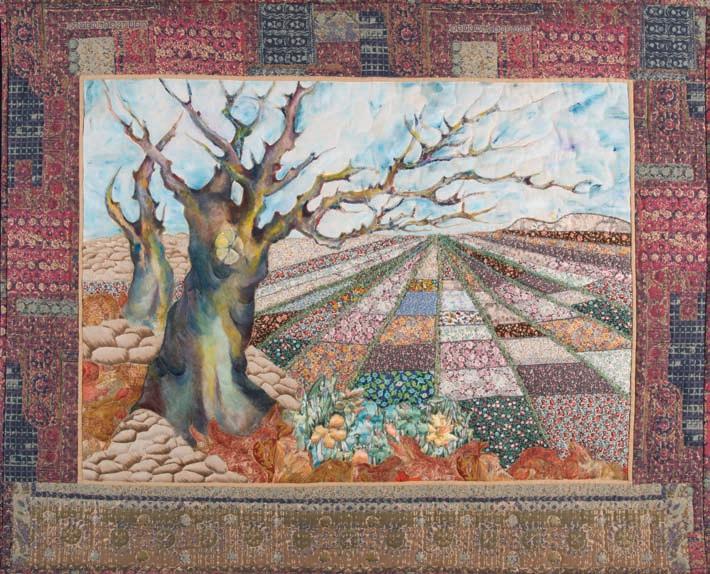
Tweedledum and Tweedledee
1996 -1997
106cm x 123cm
Textile: (painting on canvas; ‘sculptured fabric’ with invisible thread; machine stitchery; machine quilted)
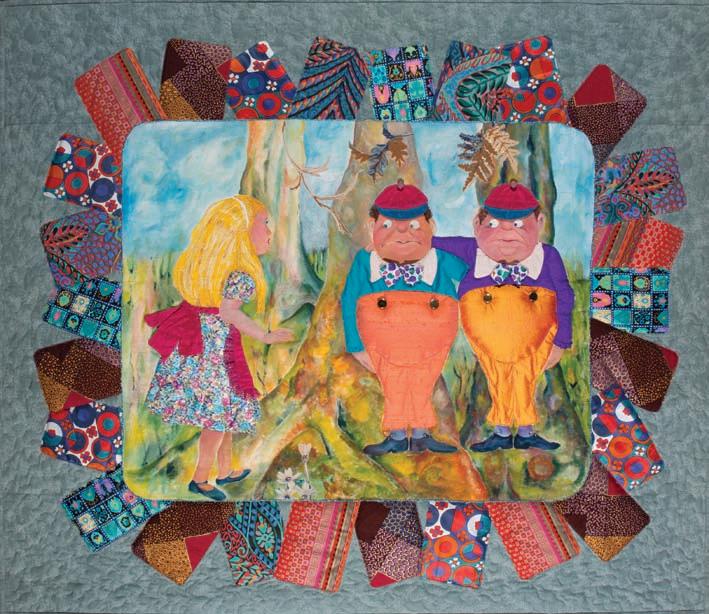
108cm X 81cm
Textile: (painting on canvas; ‘sculptured fabric’ with invisible thread; machine stitchery; machine quilted)
